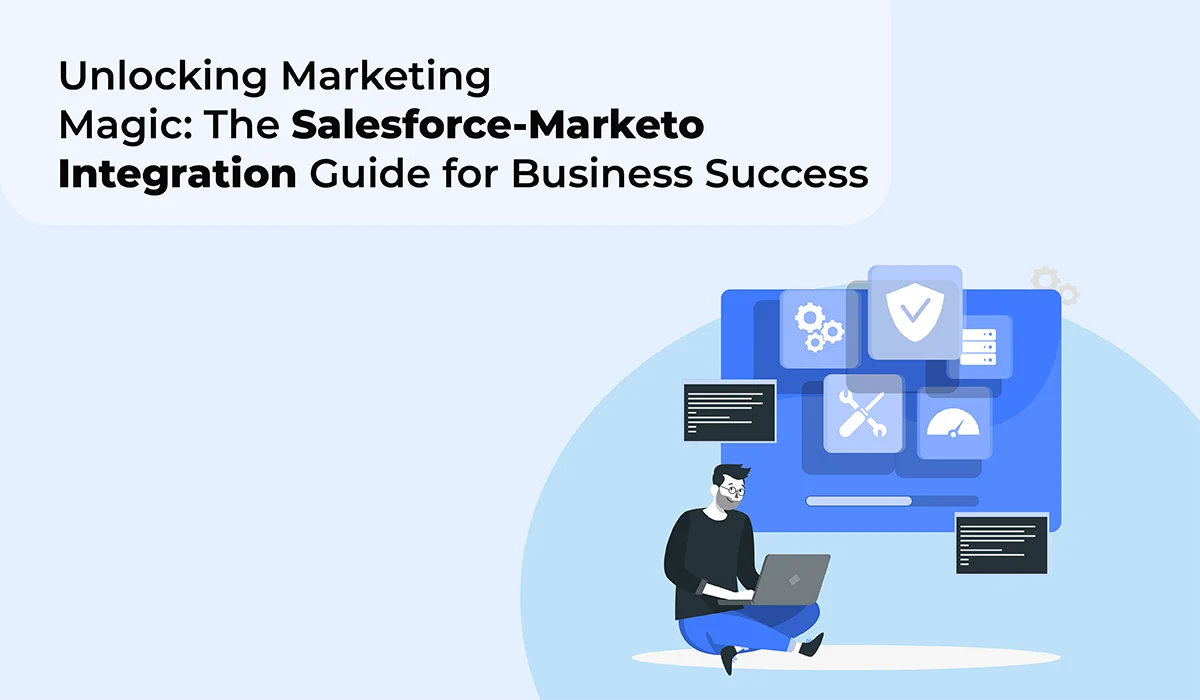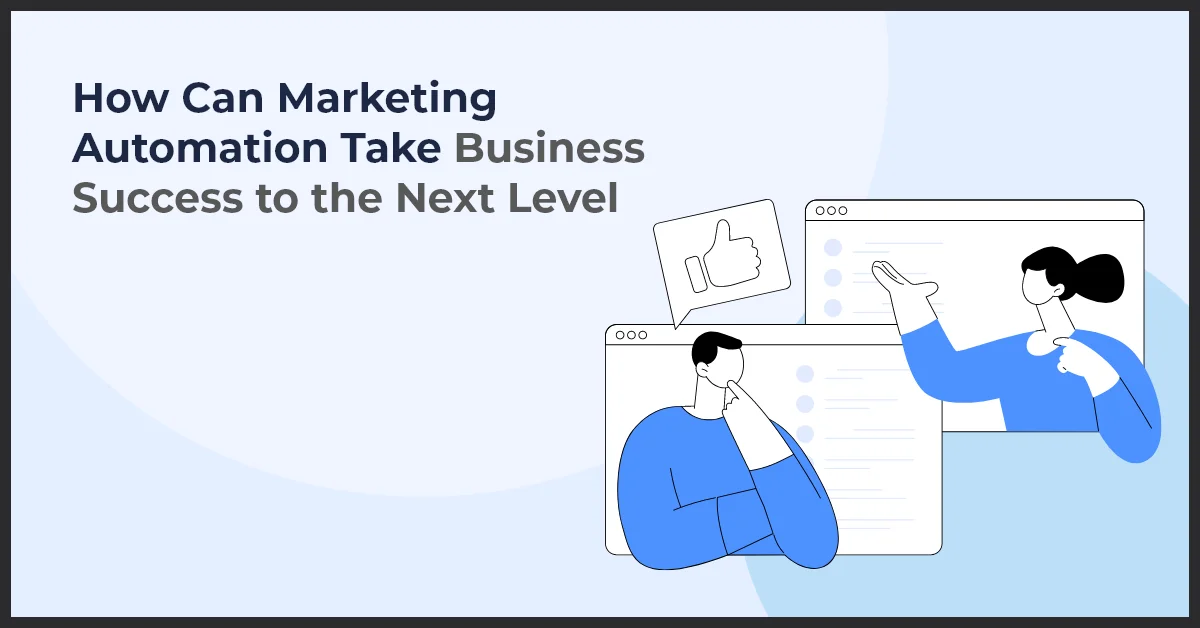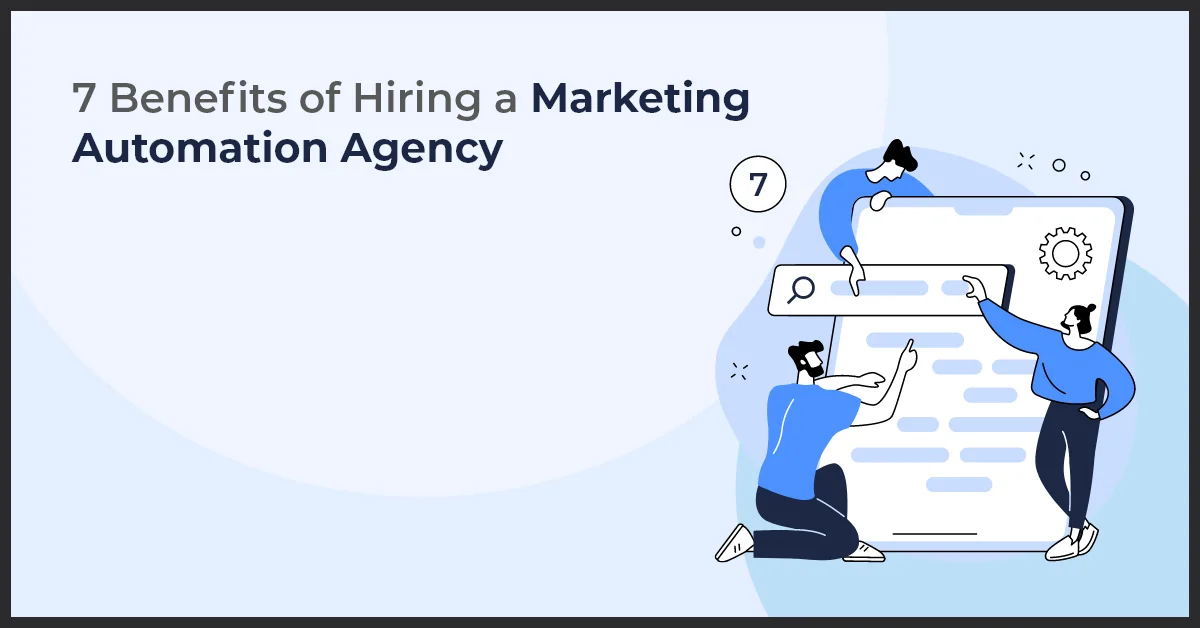Unlocking Marketing Magic: The Salesforce-Marketo Integration Guide for Business Success

Published on: February 2, 2023
Updated on: July 18, 2024
686 Views
- Marketing Automation
7 min read
Imagine unlocking the full potential of your marketing and sales efforts: that happens when Salesforce, the powerhouse of customer relationship management, seamlessly merges with Marketo Engage, the wizard of marketing automation. Together, they create a dynamic duo that's simply unstoppable.
Salesforce builds and maintains customer relationships by offering a full range of CRM services. Their SaaS-based platform integrates easily with other platforms and provides built-in applications to save customer data, contact information, marketing information, leads, opportunities, accounts, etc. Salesforce users can manage servicing, sales, and marketing through one Customer Relationship Management application.
Adobe streamlines, automates and measures marketing engagement, tasks, and workflows with their SaaS-based marketing automation software called Marketo Engage (also known as just Marketo). By using Marketo Engage, you can improve operational efficiency and accelerate revenue growth. Even 98% of marketers agree that marketing automation is vital for success.
The Importance of Salesforce-Marketo Integration
By integrating Marketo with Salesforce, you can streamline the typical flow of a lead cycle. The lead cycle involves generating, qualifying, and converting leads into paying customers. In the standard lead lifecycle, marketing acquires and qualifies leads, and then the sales team further qualifies and converts them into customers.
When Salesforce and Marketo are synced, you ensure a handoff between sales and marketing as your leads, accounts, and other records stay current throughout your revenue funnel. A successful sync between your sales, marketing, and support teams ensures tight alignment, potentially increasing customer retention and boosting sales win rates.
Key Features and Capabilities of Salesforce-Marketo Integration
Marketo continuously syncs with Salesforce throughout the day, with each synchronization process having a brief pause of 5 minutes before resuming.
Bidirectional synchronization occurs exclusively for leads, contacts, and Salesforce campaigns between Marketo Engage and Salesforce CRM. In these instances, any modifications made in either Marketo or Salesforce will automatically update the corresponding system, eliminating the need for manual intervention.
Apart from the mentioned entities, only Salesforce and Marketo are subject to synchronization. The time required for synchronization can vary depending on the volume of data being processed. This duration may increase as your business expands and accumulates more actionable data. If you wish to adjust the synchronization interval to a period longer than 5 minutes, you can contact Marketo support for assistance.
Here’s what all is synced in Salesforce-Marketo integration:
- Customer objects
- Contacts
- Tasks & Events
- Leads
- Campaigns & Members
- Accounts
- Opportunities & Roles
- User and lead queue
- Activity
- Salesforce campaigns
Where Does Salesforce-Marketo Integration Work Best?
This integration allows users to enhance their marketing performance and utilize data in both directions after the sync between Salesforce and Marketo is complete to maximize benefits.
Here are some benefits that a Salesforce-Marketo integration brings to the table:
Tracking Customer Behavior
With this Integration, users can monitor customer activity throughout the buying cycle. This includes tracking how users access the platform, their viewing habits, site visit frequency, sign-up dates, and other details such as phone numbers, occupations, postal addresses, emails, and contact information.
Creating Custom Campaigns
The integration between Marketo Engage and Salesforce CRM enables the creation of email campaigns and efficient follow-ups with a larger customer base using automated yet personalized responses. Lead-specific data, such as names and company information, can be automatically fetched from your CRM system and added to these templates.
Providing Real-Time Information
Data transmission between the two systems delivers valuable real-time information to both sales and marketing teams, in addition to data collection and analysis. This real-time insight into how leads engage with advertising efforts equips the sales team to provide timely and effective responses for maximum impact.
Streamlining Content Management
The effectiveness of advertising campaigns relies on the quality of promotions. The Salesforce CRM and Marketo integration simplifies the process of creating, maintaining, and customizing content. Users can quickly edit content, add elements, and tailor it to specific requirements.
Ensuring Data Consistency Across Systems
Marketing automation is fundamentally a data-driven process. Marketo Salesforce Integration simplifies data management across various digital platforms, including websites, applications, social media, and ticketing systems, by automatically and manually integrating data from different sources.
Enhancing Lead Management
Marketers benefit from Marketo Salesforce Integration as it enables them to attract customers, deliver personalized promotions, and generate sales-ready leads. Utilizing a lead management solution, users can engage with potential clients at scale, offering structured and personalized promotions throughout their entire lifecycle.
Leveraging Email Marketing
Salesforce Marketo Integration facilitates the creation of long-lasting customer relationships through customized communications and ROI tracking for each email sent. With comprehensive client datasets consolidated in one place, users can engage meaningfully with current and potential customers based on their interests, behaviors, and statistics.
Enabling Account-Driven Marketing
Through Marketo Salesforce Integration, users can identify and target accounts with the highest sales potential. These accounts can be shared with others for swift progression through the sales funnel. Additionally, the integration offers revenue-based account monitoring, proven lead management capabilities, tailored cross-channel interaction, and unified account tracking and identification.
A Step-by-step Guide to Salesforce-Marketo Integration
To set up Salesforce for Marketo Sync, first ensure that you've completed the necessary prerequisites:
Prerequisite 1: Confirm Salesforce API Permissions
Before initiating data synchronization, ensure you have access to Salesforce APIs.
Prerequisite 2: Obtain Full Admin Access
You'll need administrative access in both Marketo Engage and Salesforce CRM to complete the integration.
Once you have ensured these prerequisites are fulfilled, you can begin the integration process with these steps.
Step 1: Add Marketo Fields to Salesforce
- Navigate to the Customize menu and select the Lead object.
- Access Fields and create the following three fields: Score, Acquisition Date, and Acquisition Program fields on the Lead object.
- Repeat the same field creation process for the Contacts object.
Step 2: Map Custom Fields for Conversions
- Under the Lead Custom Fields & Relationships section, click on "Map Lead Fields."
- Select the field you want to map from the drop-down list.
- Choose the corresponding contact custom field. Repeat these steps for each field you've created and save your changes.
Step 3: Create a Profile
- Create a profile with a standard user role and name it "Marketo-Salesforce Sync”.
- Save the profile.
Step 4: Set Profile Permissions
- In the Administrative Permissions section, ensure the following boxes are checked:
[List of administrative permissions]
- In the General User Permissions section, ensure the following boxes are indicated:
[List of general user permissions]
- In the Standard Object Permissions section, indicate Read, Create, Edit, and Delete permissions for the relevant objects.
- Save your changes when you're finished.
Step 5: Set Field Permissions
- Identify unnecessary fields for each object and uncheck Read Access and Edit Access for those fields.
- Once you've disabled unnecessary fields, check Read Access and Edit Access for the specified object fields. Save your changes.
Step 6: Create Marketo-Salesforce Sync Account
- Create a new user account.
- Complete the required fields, specifying the User License as Salesforce, and assign the previously created "Marketo-Salesforce Sync" profile. Save the user account.
Step 7: Retrieve Sync User Security Token
- Access My Settings under the sync user's name.
- Search for "reset" and select "Reset My Security Token."
Step 8: Configure Sync User Credentials
- Go to Marketo's Admin page and select CRM, then choose Sync with Salesforce.com.
- Enter the Salesforce Sync User credentials and click "Sync Fields."
- Confirm your credentials when prompted.
Step 9: Initiate Salesforce Sync
- To start the Marketo-Salesforce sync, click "Start Salesforce Sync."
- Click "START SYNC."
Step 10: Verify Sync Status
- In Marketo, navigate to Admin > Salesforce.
- Check the sync status, which may display one of three messages: Last Synced, Sync in Progress, or Failed.
Conclusion
In conclusion, the integration of Salesforce with Marketo Engage offers businesses a powerful toolset to enhance marketing performance, streamline lead management, and align sales and marketing efforts. This synergy ensures data consistency, real-time insights, and personalized customer interactions, ultimately boosting customer retention and revenue growth. With these practices, businesses can harness the full potential of this integration and stay competitive in the ever-evolving digital landscape.
Want a Pristine Salesforce-Marketo Integration? Talk to Us!
Our expert team at Growth Natives is here to take your Salesforce-Marketo integration to the next level. Just write to us at info@growthnatives.com and we’ll get back to you.
Frequently Asked Questions
Salesforce-Marketo integration is the process of connecting Salesforce CRM with Marketo, a leading marketing automation platform. This integration enables seamless data flow between sales and marketing teams, enhancing lead management, campaign tracking, and overall business performance.
- Enhanced Lead Management: Ensure that leads are properly tracked and nurtured through both systems.
- Improved Marketing ROI: Track the effectiveness of marketing campaigns and their impact on sales.
- Streamlined Data Flow: Maintain consistent and up-to-date information across both platforms.
Better Collaboration: Foster closer collaboration between marketing and sales teams.
Key benefits include:
- Improved data accuracy and consistency
- Enhanced lead scoring and nurturing
- Streamlined workflows and automation
- Better reporting and analytics
- Increased efficiency in marketing and sales efforts
Integration ensures that lead data is synchronized between Salesforce and Marketo, allowing for accurate lead tracking, scoring, and nurturing. This ensures that sales teams have access to the most current and relevant lead information.
Steps include:
- Preparing both Salesforce and Marketo for integration
- Configuring Marketo Sync settings
- Mapping fields between the two systems
- Testing the integration
- Monitoring and maintaining the integration



